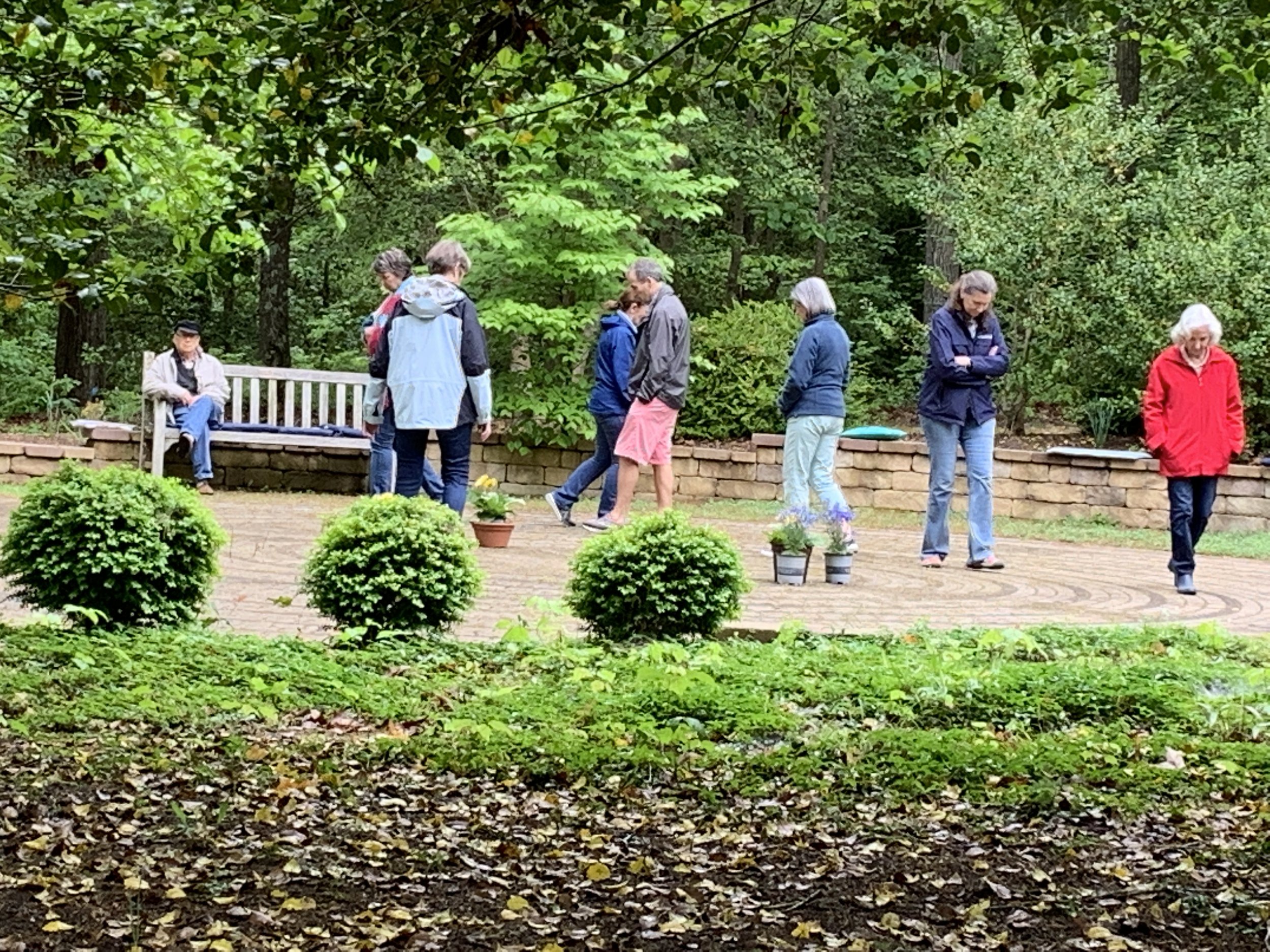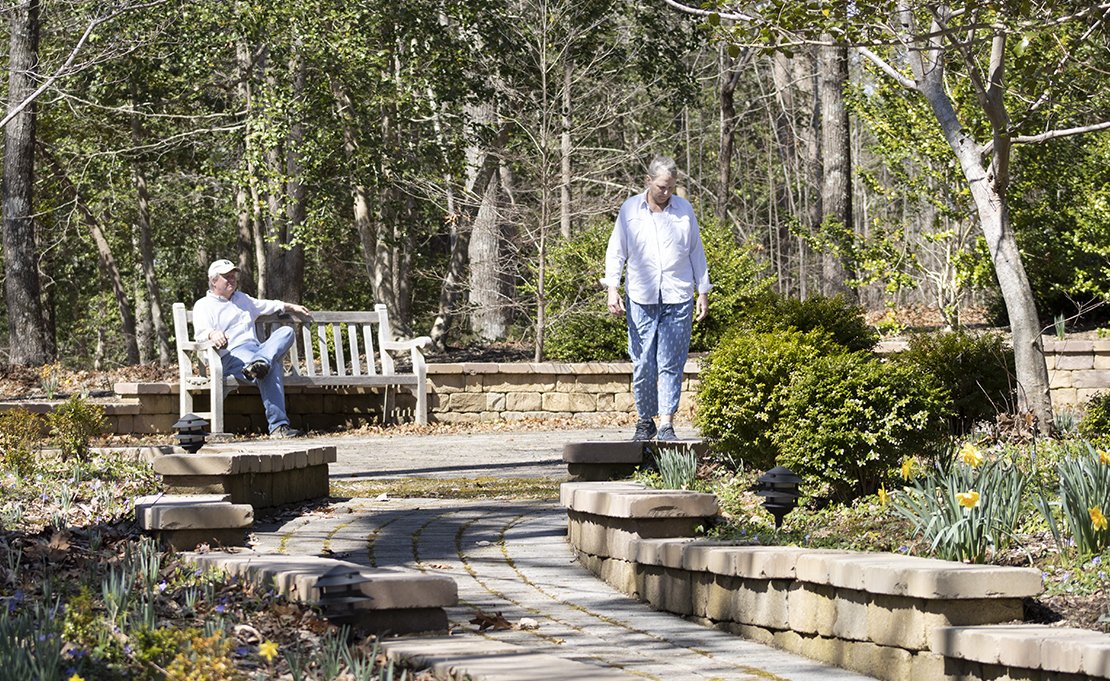The Labyrinth
in the Woods at St. Mary’s Whitechapel
For we walk by faith, not by sight.
— II Corinthians 5:7
The labyrinth in the woods at St. Mary’s Whitechapel is used as a place of contemplation and prayer. The simple act of slowly walking the path has the effect of releasing the mind from stress and allowing the pressures of daily life to fade away.
The mind quiets and clears. Surrounded by towering oaks and pines, the labyrinth in the woods at St. Mary’s Whitechapel enhances this effect. It is a place of peace and solitude. It is a place to pray and meditate. It is a quiet place.
This is what the Lord says: stand at the crossroads, and look; ask for the ancients paths, where the good way is; and walk in it, and you will find rest for your souls.
— Jeremiah 6:16
What is a Labyrinth?
A labyrinth is a narrow meandering path, with one entrance and a single route that winds in a circular pattern to the center. From the labyrinth’s center point the same path will take you out. A labyrinth is different from a maze in that there are no wrong turns or dead ends. You cannot get lost in a labyrinth.
Be still and know that I am God.
— Psalm 46:10
History of the Labyrinth
Labyrinths date back thousands of years and are not limited to any single culture or religious tradition. The earliest examples are more than 3000 years old. Labyrinths in various designs have been found in many cultures. Archeology suggests that these designs were often connected with holy places of worship. The labyrinth at St. Mary’s Whitechapel is based on the Chartres Cathedral design. The winding path of most labyrinths creates a circular pattern. The circle is a universal symbol representing unity, wholeness, infinity. The Labyrinth at St. Mary’s Whitechapel was constructed in 2008 and is located up the hill across from the northern border of the graveyard.
Peace I leave with you,
my peace I give to you.
— John 14:27
The Labyrinth and Christianity
The labyrinth became a part of the Christian tradition out of necessity. Early Christians took a vow to visit the Holy City of Jerusalem at some point in their lives. Over the centuries, particularly as Christianity grew in Western Europe, this pledge became increasingly difficult to fulfill. It was a very long, costly and arduous journey available only to the privileged few, even in the best of times. During the Middle Ages, it became dangerous as well. During this period, practices emerged which enabled Christians to honor their sacred commitment to pilgrimage. One of these was the labyrinth.
Labyrinths were created on the floors of many European cathedrals to be walked as a substitute for the great Christian pilgrimage to Jerusalem. The most famous and earliest of these is on the floor of the Chartres Cathedral in France (circa 1200). In the late 20th century the labyrinth was rediscovered by Christianity as a tool for a more spiritual pilgrimage.
And when you turn to the right or when you turn to the left, your ears shall hear a word behind you saying
"This is the way; walk in it."
— Isaiah 30:21
The Labyrinth and Community
We offer this labyrinth as a source of comfort to the community, the congregations of other churches on the Northern Neck and for personal meditation, prayer or as a place to enjoy the peaceful surroundings. The labyrinth is available for walking and meditation by individuals and small groups during daylight hours.




